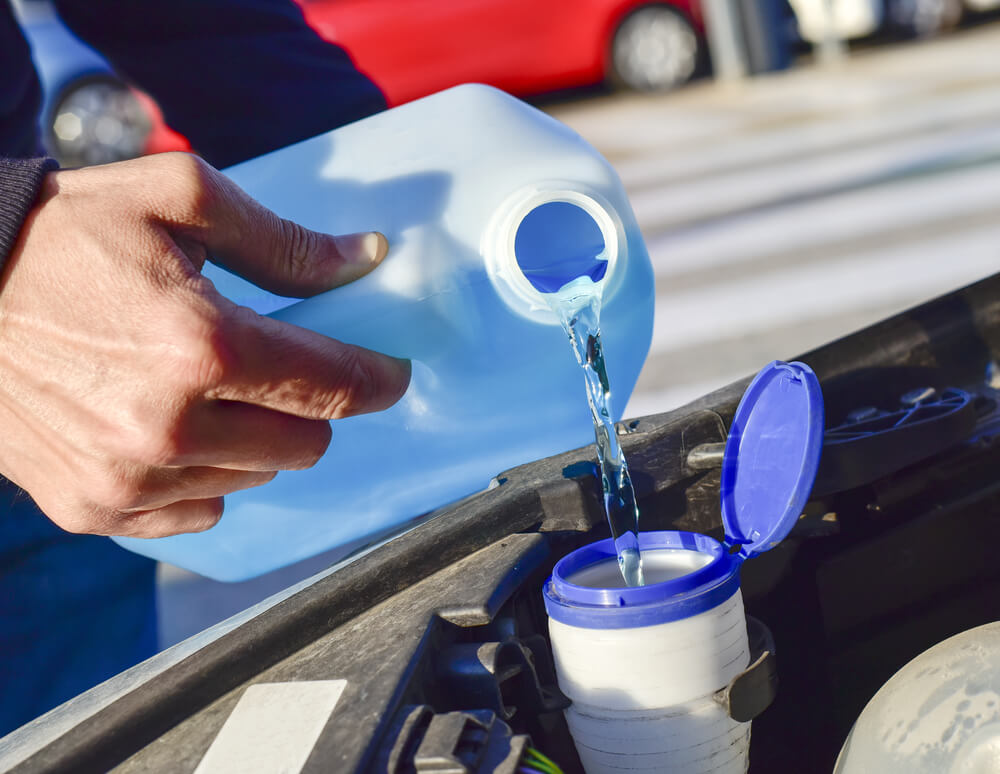Defrosting Your Car Windshield: A Winter Morning Survival Guide
Introduction
On a chilly winter morning, few things are more frustrating than discovering your car's windshield covered in a thick layer of frost or ice. Driving with impaired visibility is not only dangerous but also illegal in many places. So, how do you defrost your car windshield quickly and efficiently? In this comprehensive guide, we'll walk you through the best methods and tips for defrosting your car windshield and getting on the road safely.

Understanding Frost and Ice Formation
Before we delve into the methods for defrosting your car windshield, it's essential to understand how frost and ice form on the glass in the first place. This knowledge will help you adopt more effective strategies for prevention and removal.
Frost and ice accumulate on your windshield due to the following reasons:
-
Cold Temperatures: When the temperature drops below freezing, the moisture in the air and on your car's surfaces can freeze, forming ice crystals or frost.
-
Humidity: Higher humidity levels increase the likelihood of frost and ice formation. This is why you may notice more frost on your windshield on damp, cold mornings.
-
Clear Skies: Clear skies and calm weather conditions allow heat to escape from the ground, leading to lower temperatures and increased frost or ice formation.
Now that we have a better understanding of why frost and ice occur, let's explore effective methods for defrosting your car windshield.
Method 1: Start Your Car and Use the Defroster
One of the most common and effective methods for defrosting your car windshield is to start your vehicle and use the built-in defroster. Here's how to do it:
-
Start Your Car: Begin by starting your car's engine. If your vehicle has a remote starter, you can use it to warm up the car without leaving the comfort of your home.
-
Set the Defroster: Turn on the defroster setting on your car's heating and ventilation system. Most modern cars have a dedicated button or setting for defrosting the windshield.
-
Adjust Temperature and Fan Speed: Set the temperature to warm or hot and adjust the fan speed to a medium or high setting. This will help increase the airflow and distribute heat more effectively.
-
Direct Airflow: Ensure that the airflow is directed toward the windshield. Many cars have adjustable vents that allow you to direct the warm air specifically to the glass.
-
Wait Patiently: Allow the defroster to work its magic. Depending on the severity of the frost or ice, it may take several minutes to fully defrost the windshield.
-
Use the Rear Defroster: Don't forget to activate the rear window defroster if your vehicle has one. This will help improve rear visibility.
Method 2: Use a De-Icing Solution
If you're looking for a quicker way to defrost your car windshield, especially when you're in a hurry, you can use a commercial de-icing solution. Here's how:
-
Prepare the Solution: Purchase a commercial de-icing solution from an auto parts store or make your own by mixing isopropyl alcohol (rubbing alcohol) with water in a 2:1 ratio (2 parts alcohol to 1 part water).
-
Spray or Apply: Spray the de-icing solution directly onto the frost or ice on your windshield. Alternatively, you can soak a cloth or sponge in the solution and apply it to the glass.
-
Wait and Scrape: Allow the solution to sit for a few minutes. As it interacts with the ice, it will begin to melt it. You can expedite the process by gently scraping the ice with a plastic ice scraper or a credit card.
-
Wipe Clean: Once the ice has melted sufficiently, use a clean cloth or paper towels to wipe away any remaining moisture or frost.
-
Reapply as Needed: In cases of thick ice or stubborn frost, you may need to reapply the de-icing solution and repeat the process.
Method 3: Use a Homemade Ice Melter
If you're looking for a DIY solution to defrost your windshield, you can create a homemade ice melter using common household items. Here's how:
-
Prepare the Mixture: In a spray bottle, combine two parts rubbing alcohol (isopropyl alcohol) with one part water. You can also add a few drops of dish soap to help with spreading the solution.
-
Spray the Mixture: Spray the homemade ice melter directly onto the frost or ice on your windshield. Make sure to cover the affected areas thoroughly.
-
Wait and Scrape: Allow the solution to sit for a few minutes to soften the ice. Use a plastic ice scraper or a credit card to gently scrape away the softened ice.
-
Wipe Clean: After removing the ice, use a clean cloth or paper towels to wipe away any remaining moisture or frost.
Method 4: Preventative Measures for Future Frost
Preventing frost and ice buildup on your car's windshield can save you time and effort on cold winter mornings. Here are some preventative measures:
-
Cover Your Windshield: Use a windshield cover or tarp designed for frost protection. These covers shield your windshield from ice and frost, making it easy to remove in the morning.
-
Park in a Garage or Carport: If you have access to a garage or carport, use it to protect your car from the elements. Parking indoors can prevent frost and ice formation.
-
Use Frost Shields: Apply a silicone or Teflon-based spray to your windshield. These products create a barrier that makes it more difficult for frost to adhere to the glass.
-
Park Facing East: If possible, park your car facing east. This allows the morning sun to naturally melt frost and ice on your windshield.
-
Cover with Cardboard: Place a piece of cardboard or a large, flat object against the windshield during the night. This acts as a barrier and prevents frost from forming directly on the glass.
Conclusion
Defrosting your car windshield on a cold winter morning may seem like a hassle, but with the right methods and techniques, you can make the process more manageable. Whether you choose to start your car and use the defroster, apply a de-icing solution, create your own ice melter, or take preventative measures, ensuring clear visibility before hitting the road is essential for your safety and the safety of others. Remember to plan ahead and allow extra time on frosty mornings to avoid rushing through the defrosting process.



